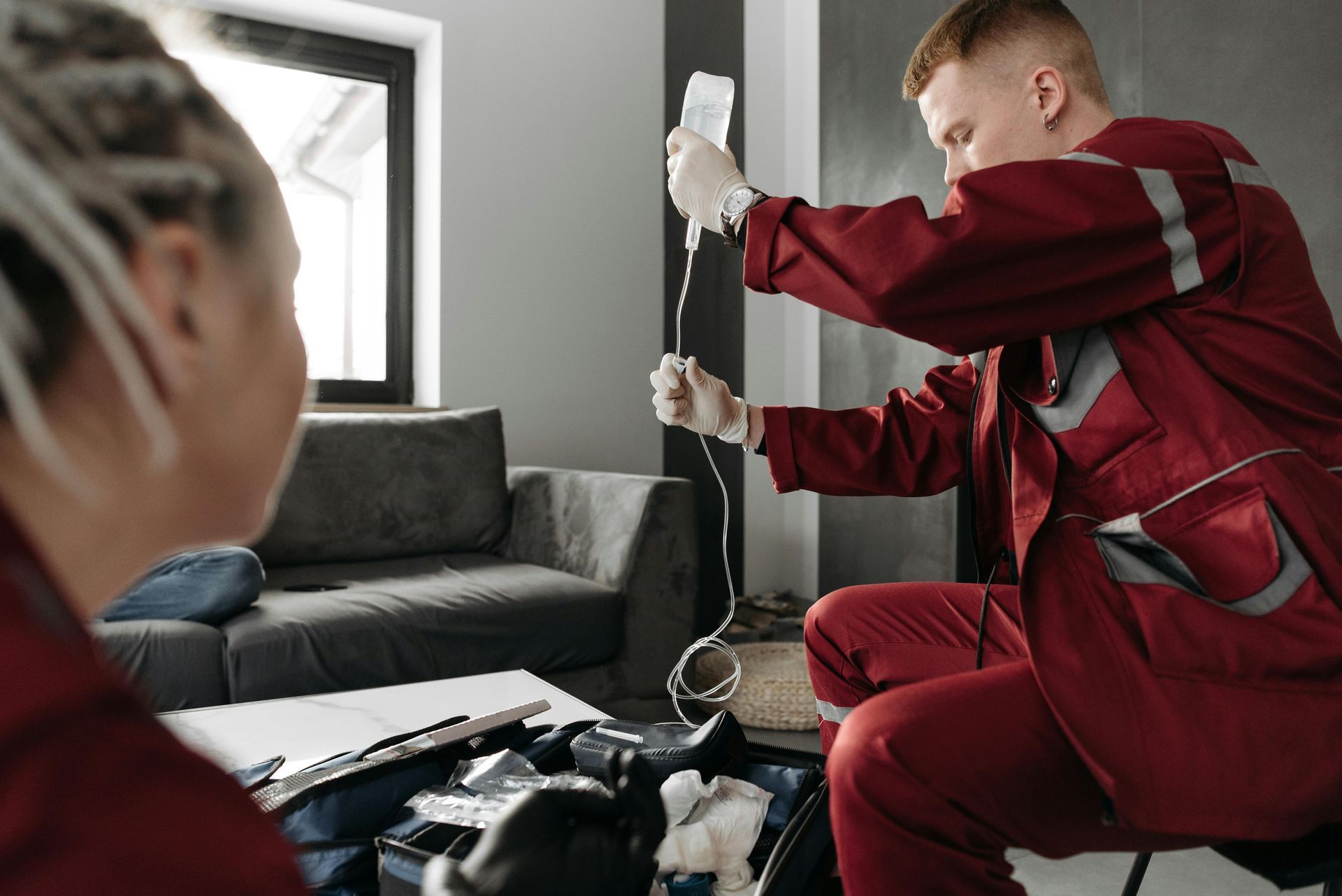Fast Facts About Food Poisoning

Medically reviewed by Micaela Strevay, FNP-C, PMHNP-BC
Table of Contents
Food poisoning is an illness caused by consuming food that has been contaminated by bacteria, viruses or parasites. These infectious organisms take hold when food is improperly handled or cooked, or during the food processing and production processes.
If you’ve ever had food poisoning, you know how disruptive and uncomfortable the side effects can be. Learn how to prevent and manage food poisoning symptoms below and consider booking an IV for food poisoning.
Symptoms of Food Poisoning
Side effects of food poisoning can vary depending on the type of contaminant you consumed, with symptoms ranging from mild to severe. You can expect most of these symptoms in common cases of food poisoning:
- Nausea
- Vomiting
- Stomach cramps
- Diarrhea
- Fever
These side effects can arise hours to weeks after consuming the tainted food and last from a few hours to multiple days.
Common Types of Food Poisoning
The three primary causes of food poisoning are bacteria, parasites and viruses. Bacteria, including E. coli, Listeria and Salmonella, are the most common types. Food poisoning caused by parasites is less common but equally as dangerous. Once consumed, these organisms derive nourishment from their host and can stay in your digestive tract for years.
The last type of food poisoning is caused by viruses. Viruses are infectious microorganisms that can only accumulate in living cells and life-forms such as humans and animals. These microorganisms can last for a long time and are difficult to get rid of.
How to Avoid Food Poisoning
Though food poisoning is common, there are many ways to prevent it. Try partaking in some of these food safety practices:
- Separate raw foods from other foods to prevent cross-contamination.
- Use a thermometer to monitor food temperature and kill bacteria and other organisms that lead to food poisoning.
- Avoid thawing foods at room temperature and, instead, defrost them in the refrigerator.
- Throw out questionable food items — it’s better to be safe than sorry!
- Wash your hands, utensils and cooking surfaces with soap and hot water often while cooking.
- Avoid raw or undercooked foods, such as meat, poultry, fish, milk products and unpasteurized juices.
Get an IV for Food Poisoning
If you’re suffering from food poisoning and want a fast way to relieve your symptoms, get an IV for nausea and other food poisoning symptoms. At Arizona IV Medics, we offer IV drip treatments meant to ease the side effects of food poisoning by increasing fluid intake and pumping the body with helpful vitamins.
In as little as 30 minutes, you can receive the nutrients you need to combat the symptoms of food poisoning. Our IVs for food poisoning will help rid your body of harmful toxins and rehydrate your system to make up for any lost nutrients. Feel better faster with our Myers’ Cocktail IV as well.
Choose an IV Package From Arizona IV Medics Today
At Arizona IV Medics, we can arrive at your home within an hour of booking our services. Our team of trained paramedics is dedicated to providing you with affordable in-home IV services for fast and effective symptom relief.
Schedule your IV package with AZ IV Medics today online or call or text us at (623) 521-5034.
Last Reviewed by
Matt Heistan on August 1, 2020






